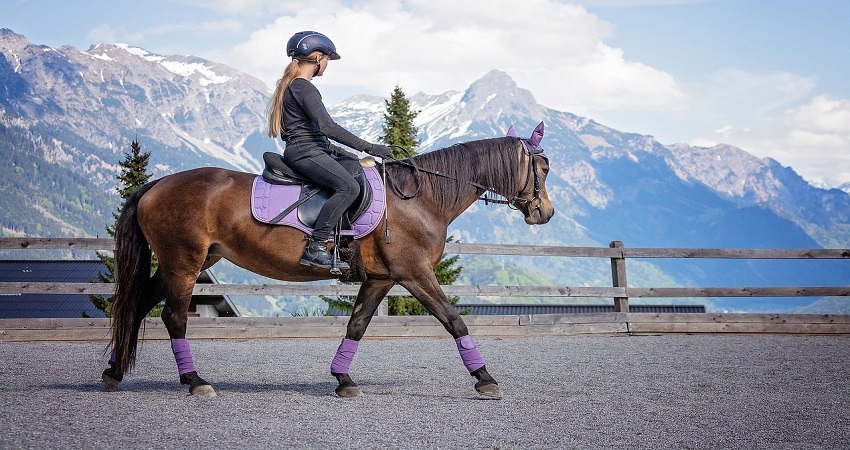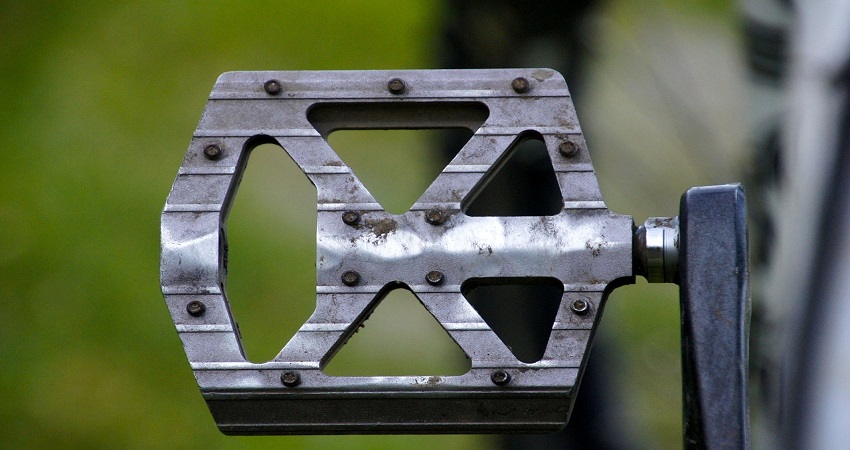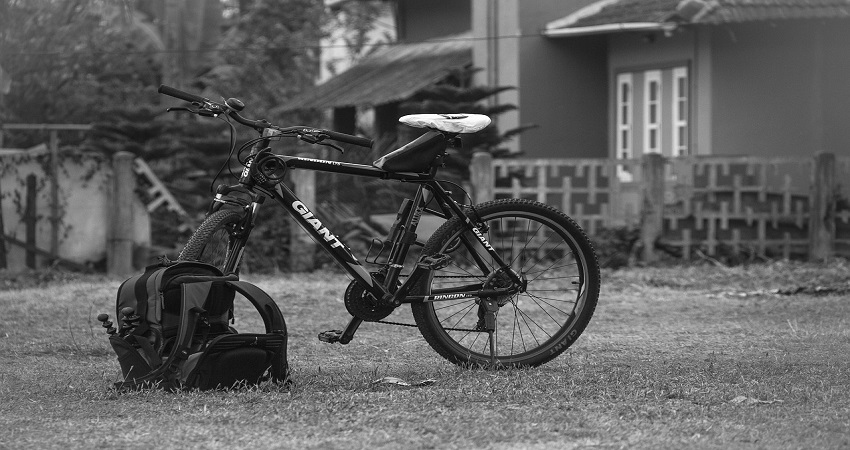
Yes, you can wear a horse riding helmet while biking. A horse riding helmet offers excellent head protection, making it suitable for various activities, including biking.
It ensures safety and reduces the risk of head injuries in case of an accident. Horse riding helmets are designed to meet safety standards and provide maximum protection, making them a reliable choice for biking enthusiasts. The sturdy construction and adjustable straps of horse riding helmets ensure a secure fit, regardless of the activity.
So, if you already have a horse riding helmet, there’s no need to invest in a separate biking helmet.
Safety First: Helmet Considerations
When it comes to any outdoor activity, safety should always be a top priority. Whether you’re horse riding or cycling, wearing a helmet is crucial to protect your head from potential injuries. However, you may be wondering if you can wear a horse riding helmet on a bike. In this article, we’ll delve into the key considerations regarding helmet safety and explore the differences between horse riding helmets and bike helmets.
Horse Riding Helmets Vs. Bike Helmets
While both horse riding helmets and bike helmets serve the purpose of protecting your head, they are designed with different activities in mind. Let’s take a closer look at their construction, impact protection, and fit and comfort.
Differences In Construction
Horse riding helmets and bike helmets differ in construction due to the unique demands of each activity. Horse riding helmets are designed to withstand impact from falls off horses and are equipped with a hard outer shell made of materials like fiberglass or ABS plastic. They also feature a soft foam inner lining for added comfort and shock absorption. Bike helmets, on the other hand, are specifically engineered for protecting against bicycle-related accidents. They have a streamlined design with a thin hard shell and a thick layer of foam inside.
Impact Protection
When it comes to impact protection, both horse riding helmets and bike helmets are built to absorb and distribute the force of an impact. However, due to the potential differences in the types and severity of accidents involved in horse riding and cycling, the helmets may prioritize different areas of protection. Horse riding helmets often feature extended coverage at the back of the head, providing additional safeguarding against falls from a higher height. Bike helmets, on the other hand, may offer more protection to the temples and sides of the head, as bicycle accidents often involve lateral impacts.
Fit And Comfort
Getting the right fit and ensuring comfort is essential when it comes to wearing a helmet. Horse riding helmets are designed to fit securely and snugly, featuring harness systems that secure them in place. These helmets typically have ventilation holes to allow for airflow during physical activity. Bike helmets, on the other hand, often come with adjustable straps and fitting systems to accommodate different head sizes and shapes. They are also designed for maximum ventilation, keeping cyclists cool during their rides.
In conclusion, while both horse riding helmets and bike helmets serve the critical function of protecting your head, it’s important to use them for their intended activities. The differences in construction, impact protection, and fit and comfort make each helmet appropriate for its respective sport. Remember, your safety should always come first, no matter which outdoor activity you choose!
Can You Wear A Horse Riding Helmet On A Bike?
When it comes to safety, wearing a helmet is crucial, whether you’re horseback riding or riding a bike. But have you ever wondered if you can wear a horse riding helmet while cycling? In this article, we’ll explore the legal considerations, effectiveness, and potential risks and limitations of wearing a horse riding helmet on a bike.
Legal Considerations
Before deciding whether it’s okay to wear a horse riding helmet on a bike, it’s important to consider the legal aspects. The laws regarding helmet use vary from country to country, so it’s essential to check the regulations in your specific location.
Most countries have specific safety standards and certifications for bicycle helmets, to ensure they provide adequate protection in the event of an accident. While horse riding helmets are built to protect the head as well, they may not meet the specific requirements set for cycling helmets.
It’s important to note that if you choose to wear a horse riding helmet on a bike in a country or jurisdiction where it’s not certified for cycling use, you might be breaking the law. So, it’s best to find a helmet that meets the legal standards set for biking.
Effectiveness Of Horse Riding Helmets On Bikes
When it comes to protecting your head, both horse riding helmets and bike helmets are designed with the primary goal of reducing the risk of head injuries. However, there are some differences in their construction and features.
Bike helmets are specifically engineered for cycling and are designed to absorb impact from falls or collisions. They are lightweight, well-ventilated, and provide protection to the sides and rear of the head.
On the other hand, horse riding helmets are designed to protect the head from falls while horseback riding. They have a more rigid shell and a deeper fit to offer protection against potential kicks or blows from horses. While they may offer some level of protection when cycling, their design may not be optimized for the impact forces experienced during bike accidents.
In terms of effectiveness, wearing a helmet is always better than not wearing one at all. However, to ensure maximum protection, it’s recommended to use a helmet that is specifically designed for cycling.
Potential Risks And Limitations
While wearing a horse riding helmet on a bike may seem like a viable solution, there are potential risks and limitations to consider. The main concern is that the helmet may not provide adequate protection in certain types of bike accidents.
Since horse riding helmets are not designed with the same impact forces in mind as bike helmets, they might not offer the same level of protection during high-speed crashes or collisions. Additionally, the ventilation systems on horse riding helmets may not be as effective for cycling, potentially causing discomfort and overheating.
It’s also essential to note that wearing a helmet that doesn’t conform to cycling safety standards may void any insurance claims in case of an accident.
In conclusion, while it may be tempting to wear a horse riding helmet on a bike, it’s recommended to use a helmet that is specifically designed and certified for cycling. It’s important to abide by the legal regulations in your area and prioritize your safety by choosing a helmet that offers optimal protection during bike rides.
Choosing The Right Helmet For Your Activity
Choosing the right helmet for your activity is essential for safety. While a horse riding helmet may offer protection, it may not be suitable for biking due to design differences and safety standards.
Choosing A Bike Helmet
When it comes to cycling, safety should always be a top priority. One essential safety gear that should never be overlooked is a bike helmet. Choosing the right bike helmet is crucial to ensure optimum protection for your head in case of any accidents or falls during your cycling adventures.
So, what should you look for when choosing a bike helmet?
- Size: Make sure to select a helmet that fits snugly on your head. Too loose, and it won’t provide adequate protection. Too tight, and it might be uncomfortable.
- Weight: Opt for lightweight helmets that won’t strain your neck during long rides.
- Construction: Look for helmets with a sturdy outer shell and impact-absorbing foam inside.
- Visibility: Consider helmets with reflective elements or bright colors to enhance visibility, especially when cycling in low-light conditions.
- Airflow: Ventilation is essential to keep your head cool during hotter rides. Look for helmets with adequate airflow features.
- Adjustability: Helmets with adjustable straps and fit systems allow for a customized and secure fit.
By keeping these factors in mind, you can confidently choose a bike helmet that provides great protection and ensures a comfortable ride.
Choosing A Horse Riding Helmet
Similar to bike helmets, wearing the right helmet for horse riding is crucial to ensure your safety while indulging in this equestrian activity.
Here are some important considerations when selecting a horse riding helmet:
- Certifications: Look for helmets that meet or exceed safety standards specifically designed for horse riding, such as ASTM/SEI certifications.
- Fit: A well-fitting horse riding helmet is essential. Measure your head and refer to the manufacturer’s size chart to find the perfect fit.
- Chin strap: Ensure that the helmet’s chin strap is adjustable, snug but comfortable, and securely fastened.
- Retention system: Helmets with a secure retention system or harness help keep the helmet in place during sudden movements or falls.
- Visor: Some horse riding helmets come with a visor that provides shade and protection from the sun.
- Aesthetics: While appearance may not be the top priority, selecting a helmet that you feel confident wearing can enhance your enjoyment of horse riding.
Investing in a proper horse riding helmet is an investment in your safety, ensuring you can enjoy your rides with peace of mind.
Considerations For Multiple Activities
But what If you are someone who enjoys both activities – cycling and horse riding? Can you wear a horse riding helmet on a bike, or vice versa?
While both helmets share similar objectives of protecting the head, it is important to note that bike helmets and horse riding helmets are designed specifically for their respective activities. The design and construction of these helmets cater to the different risks and impact scenarios unique to each activity.
Therefore, it is recommended to use a bike helmet for cycling and a horse riding helmet for riding. By using the appropriate helmet for each activity, you can ensure optimal protection and safety.
Understanding The Importance Of Helmet Standards
To understand the importance of helmet standards, it’s vital to recognize that a horse riding helmet may not be suitable for bike use. Different activities require helmets designed specifically for their respective sports, ensuring optimal safety and protection.
Bike Helmet Standards
When it comes to cycling safety, one of the most crucial pieces of equipment you can invest in is a helmet. It provides protection for your head in the event of a fall or collision, significantly reducing the risk of serious head injuries. But not all helmets are created equal.
Bike helmets must meet specific safety standards to ensure they provide adequate protection. Different countries have their own regulations and standards that manufacturers must adhere to. In the United States, for example, the Consumer Product Safety Commission (CPSC) sets the standard for bike helmets sold in the country.
The CPSC standard requires helmets to pass rigorous tests for impact resistance and retention systems. These tests assess the helmet’s ability to absorb and dissipate impact energy, as well as its ability to stay securely on the rider’s head during a crash.
Beyond the CPSC standard, there are other respected standards such as the Snell Memorial Foundation standard and the European EN1078 standard. These standards often involve additional testing and certification processes to ensure the highest level of helmet safety.
Horse Riding Helmet Standards
Horse riding is another activity that requires proper head protection, but the standards for horse riding helmets are quite different from those for bike helmets. Horse riding helmets are specifically designed to protect the rider’s head in the unique situations that can occur while riding and working with horses. They must meet their own set of safety standards to be deemed fit for use.
One widely recognized standard for horse riding helmets is the ASTM F1163 standard, developed by the American Society for Testing and Materials. This standard specifies requirements for impact resistance, stability, and the design of the helmet’s retention system. It focuses on protecting the rider from head injuries caused by falls and impacts with hard surfaces or objects.
In addition to the ASTM F1163 standard, other standards that are commonly used around the world include the European CE standard and the British PAS015 standard. These standards ensure that horse riding helmets meet specific safety criteria and provide reliable protection for riders.
Comparing Standards
While both bike helmets and horse riding helmets serve the purpose of protecting the head, it is important to understand that they are designed for different activities. Each type of helmet must meet its own set of safety standards to ensure adequate protection.
Comparing standards, we can see that bike helmet standards generally focus on protecting the head during cycling-related incidents, while horse riding helmet standards are tailored to the specific risks encountered while riding horses. These risks can include falling from a horse, being kicked, or sustaining a head injury while performing groundwork or horse care tasks.
Therefore, it is crucial to choose the right type of helmet for the activity you will be engaging in. Wearing a horse riding helmet while cycling may not provide the same level of protection as a properly certified bike helmet. Likewise, using a bike helmet for horse riding would not meet the safety requirements for equestrian activities.
To ensure your safety, it is always recommended to wear the appropriate helmet for the specific activity you’re undertaking. Investing in a helmet that meets the relevant safety standards will give you peace of mind and help reduce the risk of serious head injuries.
Frequently Asked Questions Of Can You Wear A Horse Riding Helmet On A Bike?
Can A Horse Riding Helmet Be Used For Biking?
Yes, a horse riding helmet can be worn for biking. Both helmets offer similar protection and meet safety standards. However, it’s recommended to choose a helmet specifically designed for biking, as it provides better ventilation and aerodynamics for cycling activities.
What Is The Difference Between A Horse Riding Helmet And A Bike Helmet?
The main difference between a horse riding helmet and a bike helmet lies in their design and intended purposes. Horse riding helmets are designed to protect against falls from a horse, while bike helmets are specifically engineered to protect against head injuries during cycling accidents.
Are Horse Riding Helmets Safe For Cycling?
While horse riding helmets may offer some level of protection, they are not specifically designed for cycling. It’s recommended to use a helmet that is specifically designed for biking, as it provides better comfort, ventilation, and protection tailored to the needs of cyclists.
Conclusion
While a horse riding helmet may provide some level of protection for a bike rider, it is not specifically designed for cycling and may not meet the necessary safety standards. It is always recommended to wear a bike helmet that is specifically designed for biking to ensure maximum protection in case of accidents or falls.




